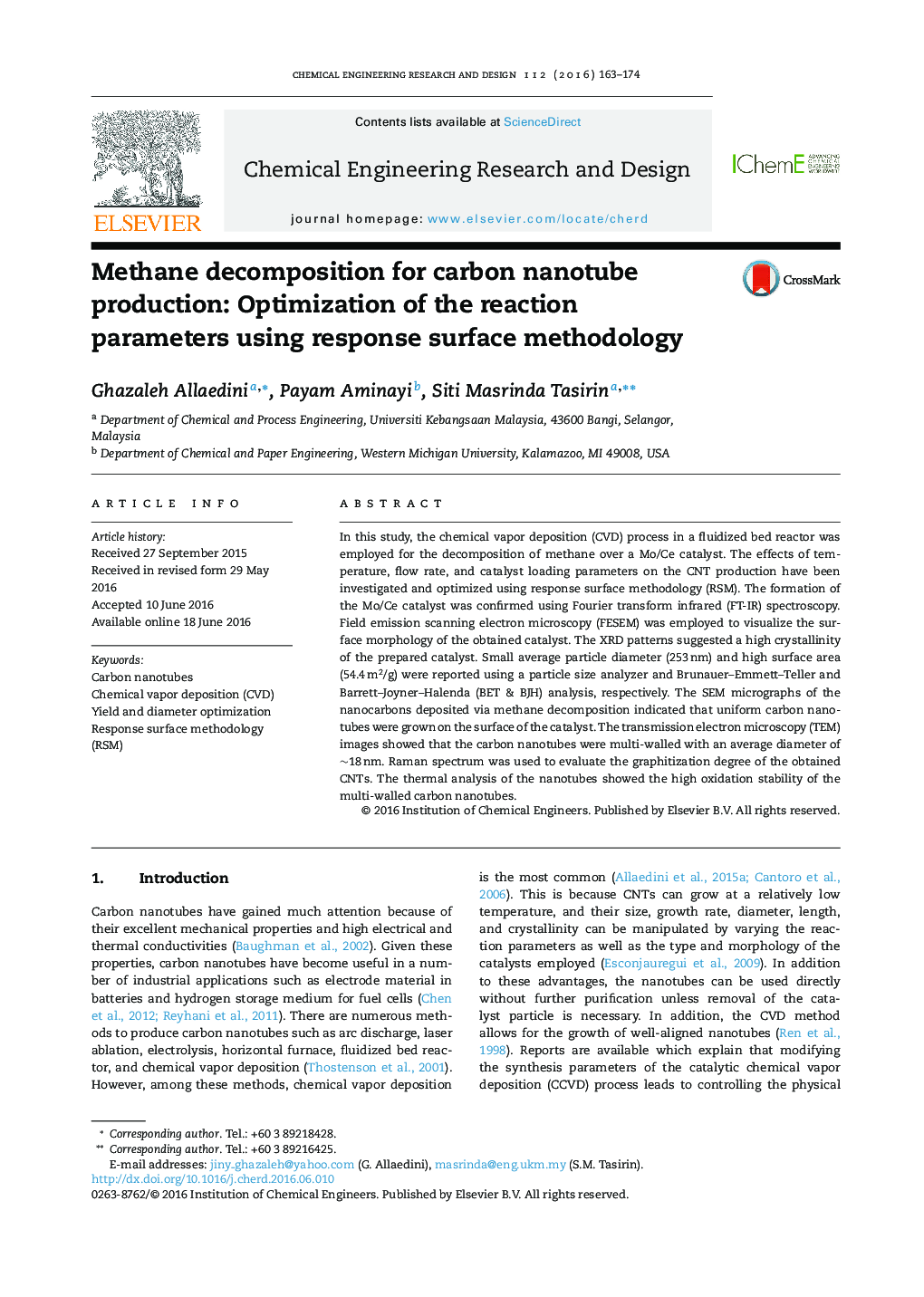| Article ID | Journal | Published Year | Pages | File Type |
|---|---|---|---|---|
| 621058 | Chemical Engineering Research and Design | 2016 | 12 Pages |
•CNTs were prepared via methane decomposition in a fluidize bed CVD process.•The effects of temperature, methane flow rate, and catalyst amount were investigated.•The process parameters were optimized for smaller diameter and higher yield.•The TEM and SEM images confirmed the formation of multi-walled carbon nanotubes.
In this study, the chemical vapor deposition (CVD) process in a fluidized bed reactor was employed for the decomposition of methane over a Mo/Ce catalyst. The effects of temperature, flow rate, and catalyst loading parameters on the CNT production have been investigated and optimized using response surface methodology (RSM). The formation of the Mo/Ce catalyst was confirmed using Fourier transform infrared (FT-IR) spectroscopy. Field emission scanning electron microscopy (FESEM) was employed to visualize the surface morphology of the obtained catalyst. The XRD patterns suggested a high crystallinity of the prepared catalyst. Small average particle diameter (253 nm) and high surface area (54.4 m2/g) were reported using a particle size analyzer and Brunauer–Emmett–Teller and Barrett–Joyner–Halenda (BET & BJH) analysis, respectively. The SEM micrographs of the nanocarbons deposited via methane decomposition indicated that uniform carbon nanotubes were grown on the surface of the catalyst. The transmission electron microscopy (TEM) images showed that the carbon nanotubes were multi-walled with an average diameter of ∼18 nm. Raman spectrum was used to evaluate the graphitization degree of the obtained CNTs. The thermal analysis of the nanotubes showed the high oxidation stability of the multi-walled carbon nanotubes.
Graphical abstractFigure optionsDownload full-size imageDownload high-quality image (120 K)Download as PowerPoint slide
